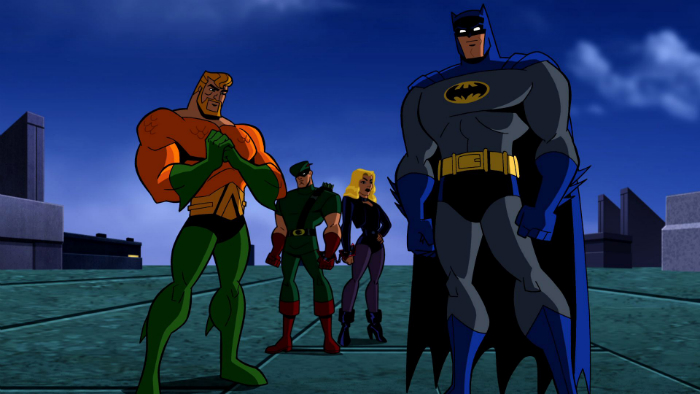No comic book character has been as thoroughly mined for his or her transmedia gold than the Batman. You name the media platform and Batman has appeared on it, probably multiple times. Heck, he’s involved in so many monthly comic book titles with DC that I’m surprised Marvel hasn’t had to start publishing one or two just help them keep up with the workload.
TV has been no exception to this. The infamous and kitschy Adam West series of the 1960s gave many viewers a skewed view of the Caped Crusader while the upcoming series Gotham promises a much different angle. So far, it’s looking like Smallville reconceptualised for Batman but that’s an entirely different topic. Batman has also had more than a few animated series, some more successful than others. And it’s no coincidence that when Kevin Conroy is voicing Batman/Bruce Wayne, success much more likely. But there is one truly great Batman animated series that didn’t use Mr. Conroy’s important talents; Batman: The Brave and the Bold.
The essential premise of this series was Batman teaming up with another DC hero to face off against a threat. The concept was borrowed from an on and off DC title called The Brave and the Bold that was about hero team-ups, not always featuring Batman. Some heroes like Blue Beetle, Green Arrow, Aquaman, and Plastic Man were regulars on this animated series but the creators frequently dug deep into the depths if the DC character catalogue to pull out heroes and villains even the most hardcore of comic book fans might struggle to know about.
On top of that, the tone of the show was far different than any other Batman animated series. It was far more light hearted with a version of Batman who was a lot more engaging rather than being dark and brooding. This tone was reminiscent of the Adam West series, as was the look of the world they played in. Characters, settings, and even Batman’s gear carried a classic look like you would find in 1960s comic books though the tech maintained modern functions. You see the Adam West-era influence particularly in Batman’s uniform and in the look of his gadgets and vehicles. These anachronistic tendencies combined with the light-hearted tone makes the series a very singular watch.
Diedrich Bader, known best as Oswald on The Drew Carey Show, lent his voicing talents to the project as Batman and does superb job. What’s interesting is how small a role Bruce Wayne plays in the series, rarely appearing on screen and not without his face obscured until season two. Balancing the duality of Wayne/Batman’s life has always been a key component in any Batman story so having it be such a small part of this series feels a little odd.
In the end, Batman: The Brave and the Bold only ran for three seasons, despite an interesting narrative, fun tone, and a distinctive look. While comic book geeks enjoyed the use of deep cut characters, casual watchers might have found the use of The Clock King, Robotman, or Booster Gold a little more confusing. If you don’t know them from the comics, the show does little to explain who they are in most cases.
Regardless, Batman: The Brave and the Bold is a great Batman series that offers unique perspective on a character that jumps from the page to the screen in new adaptations on a regular basis.
